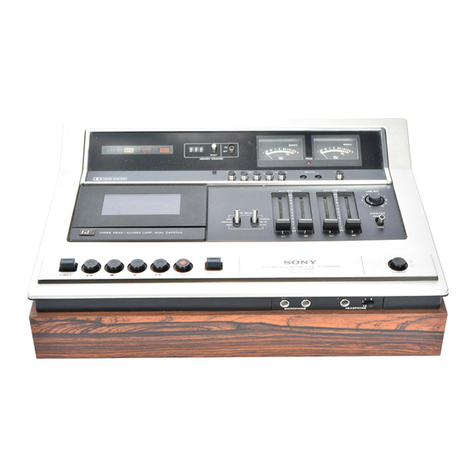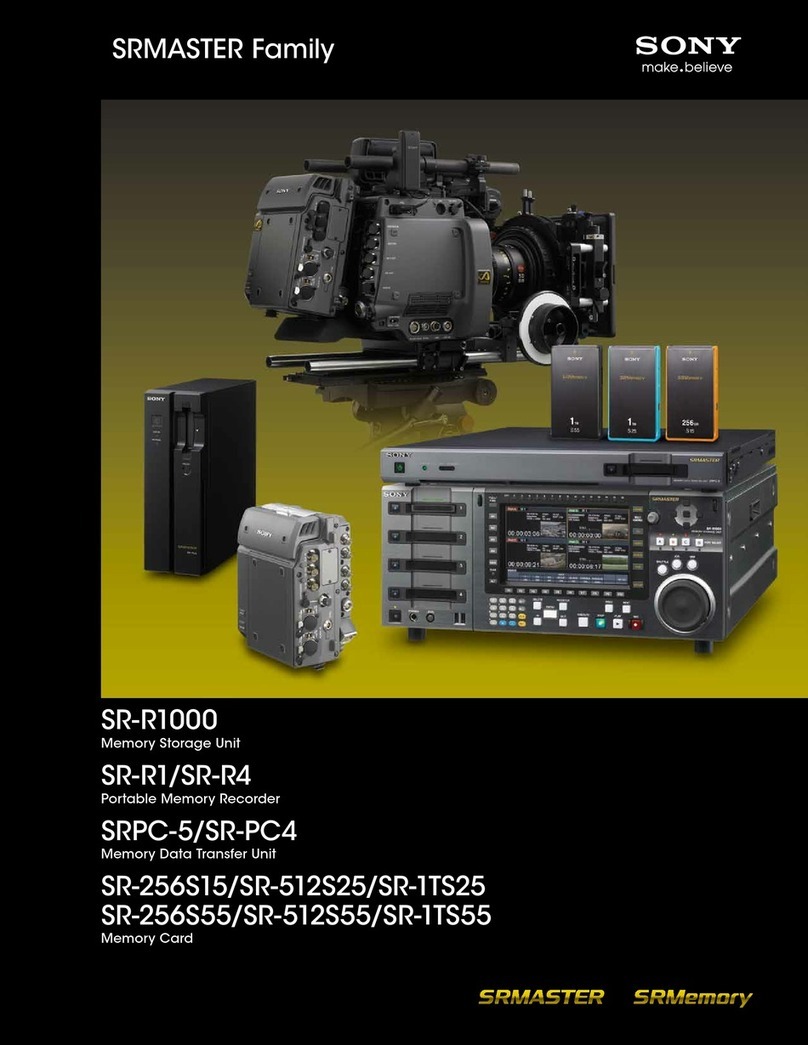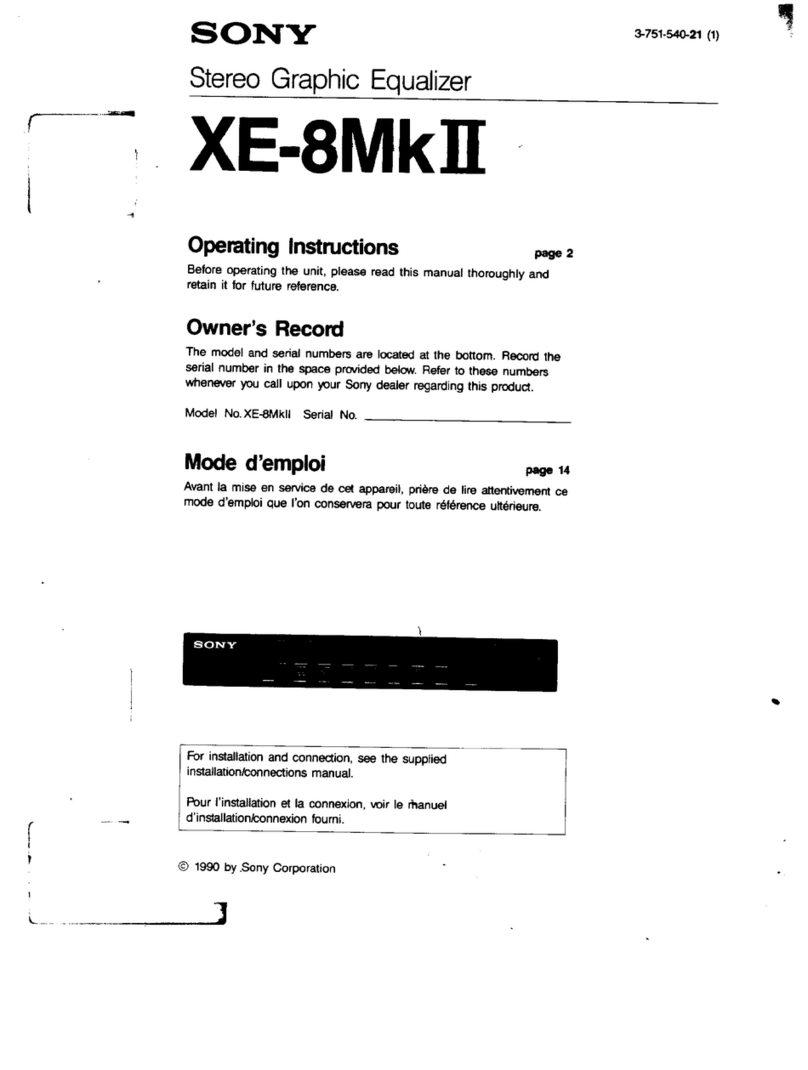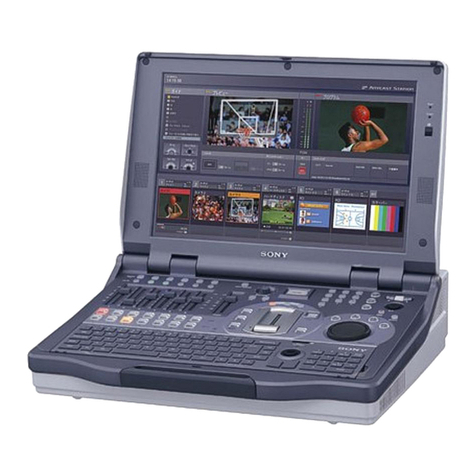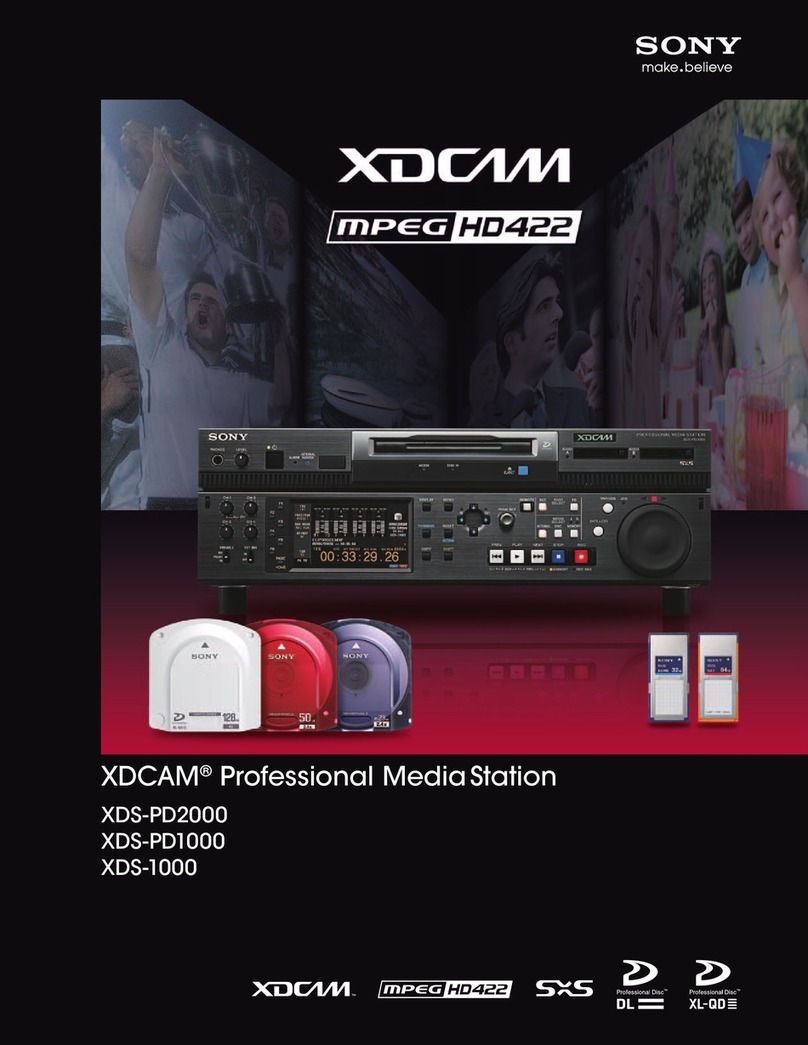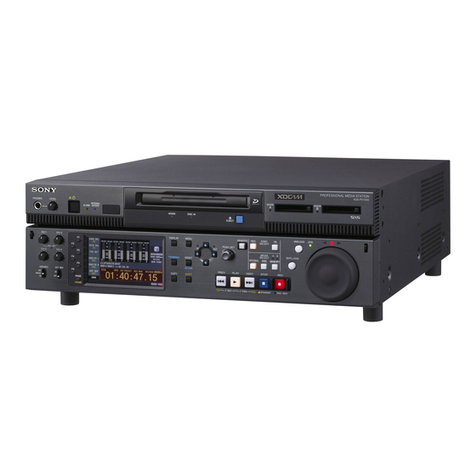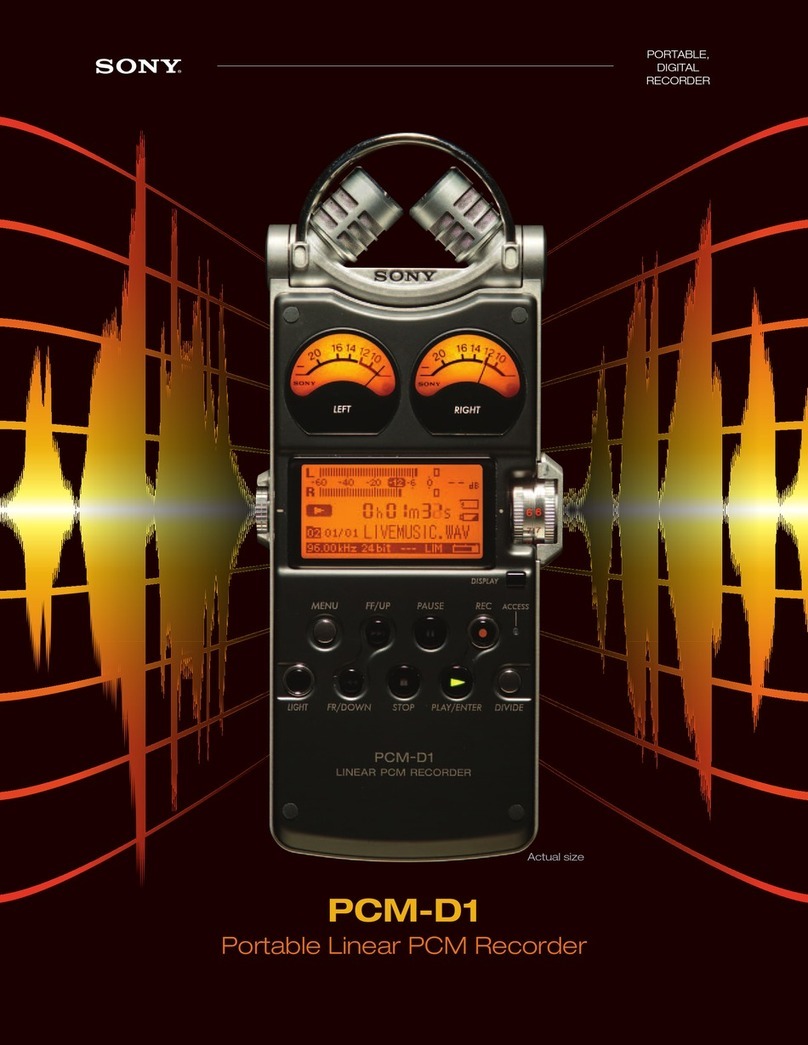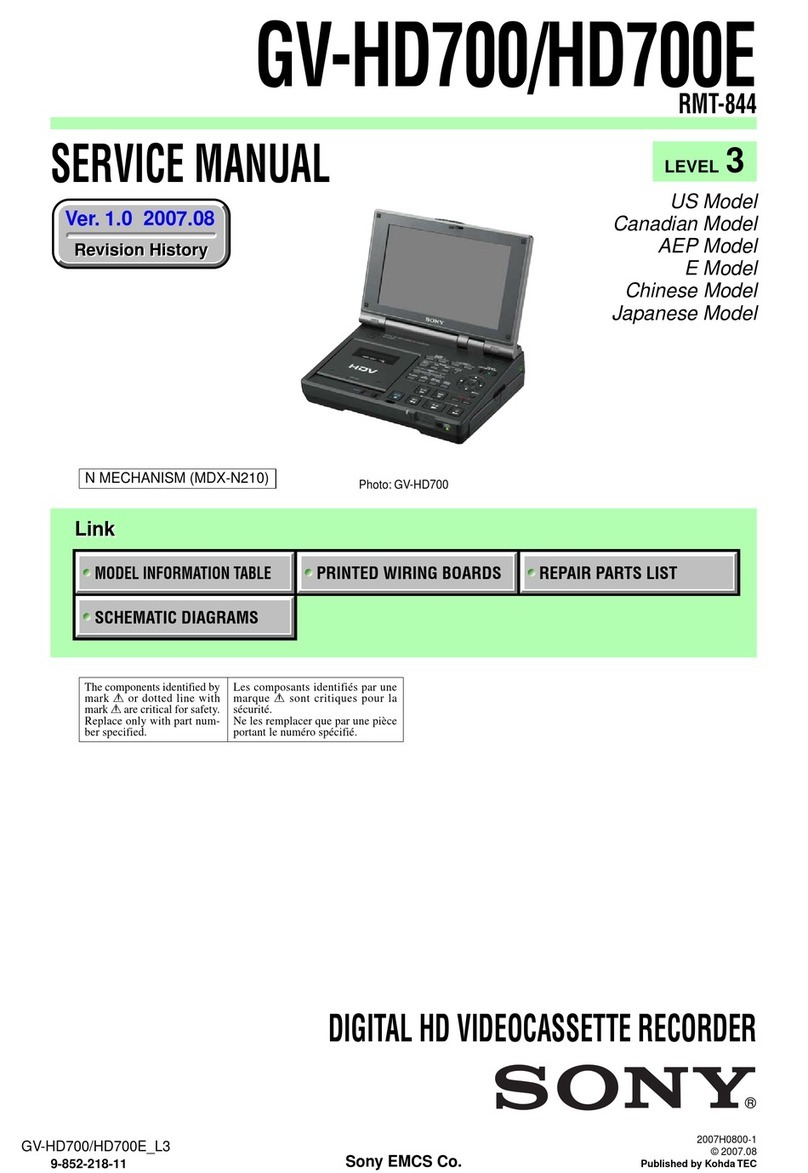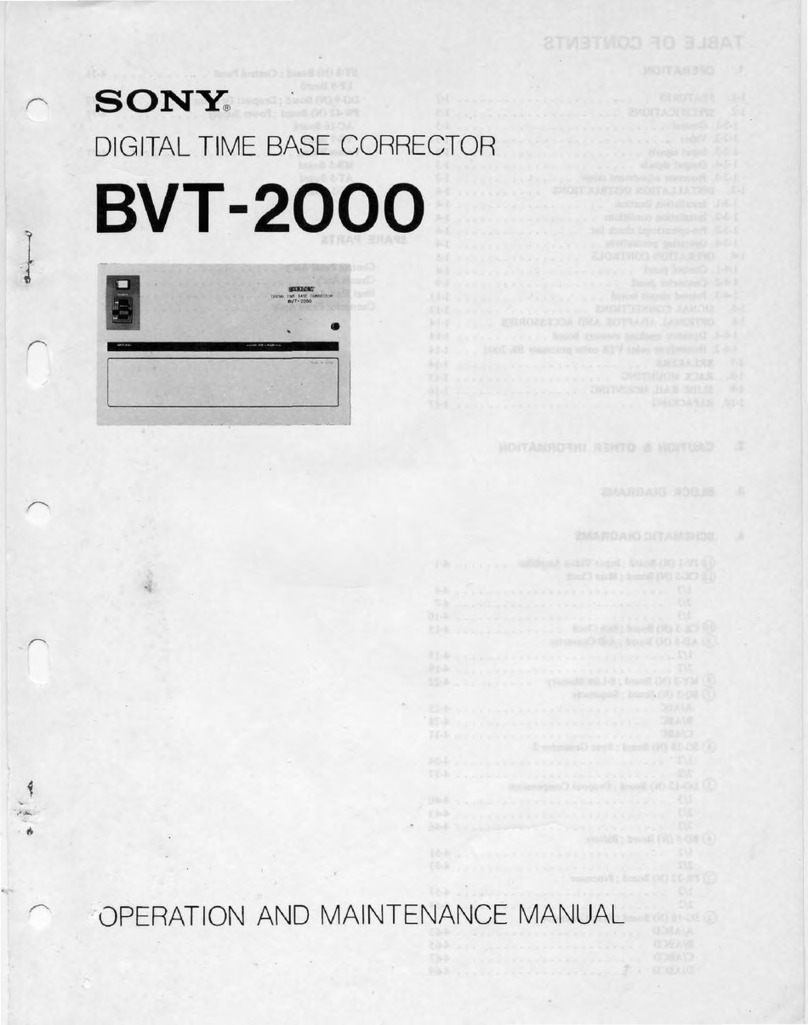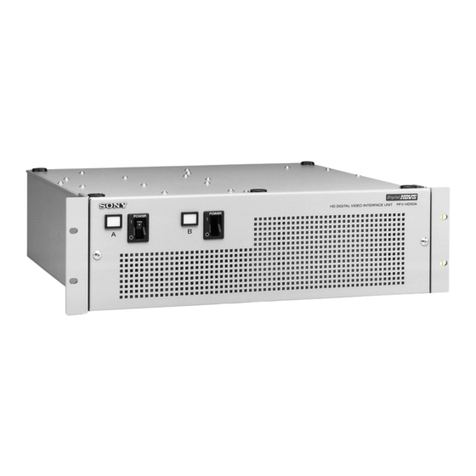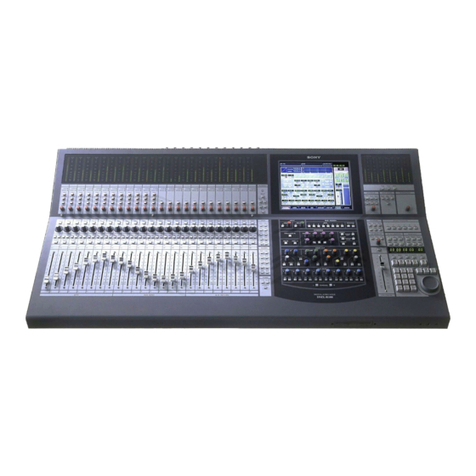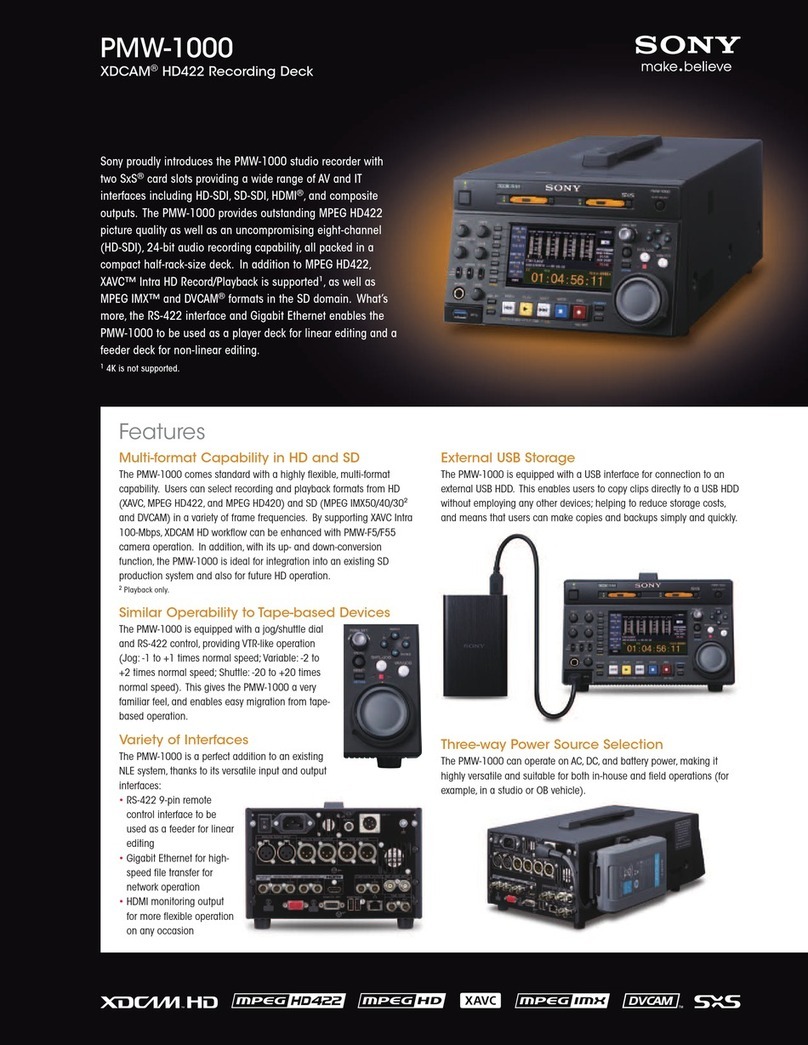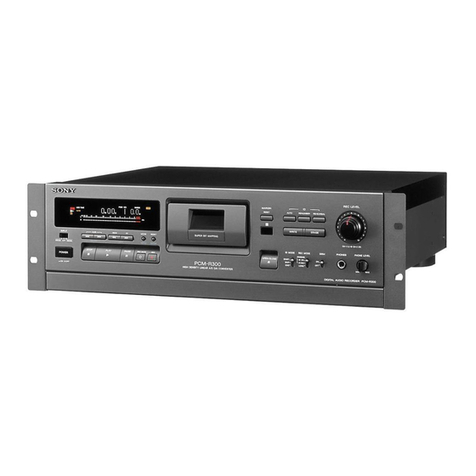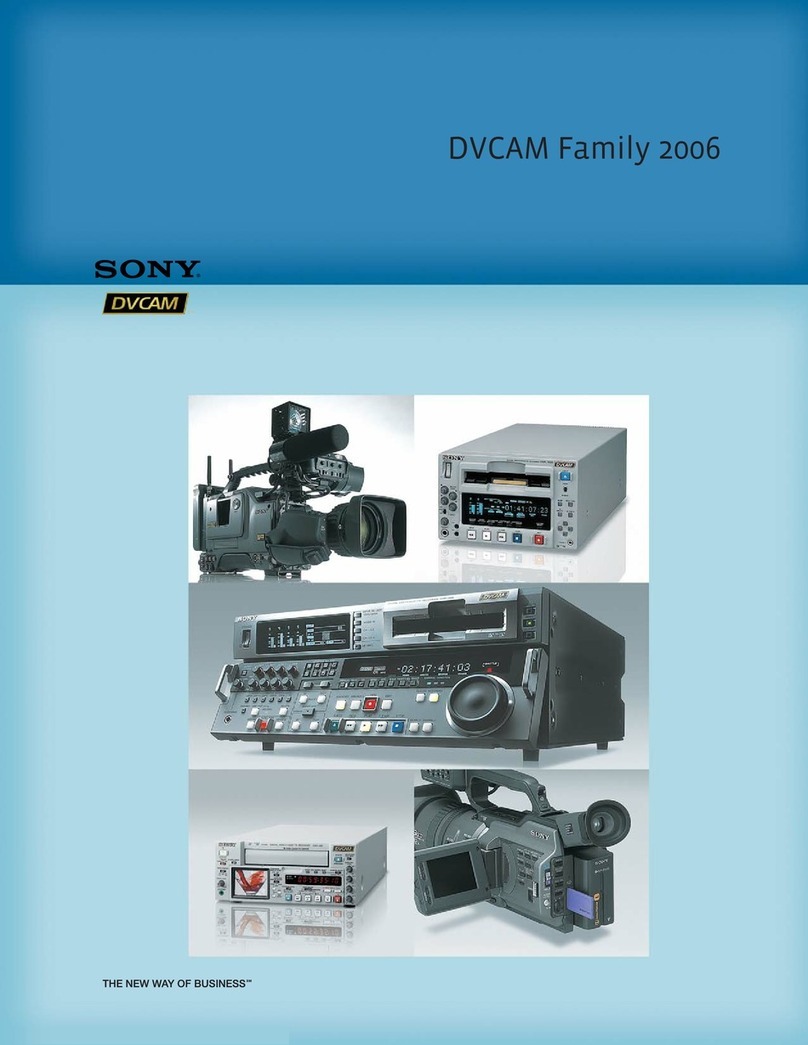2
TABLE OF CONTENTS
1. GENERAL
Index to Parts and Controls ..................................................... 3
2. DISASSEMBLY
2-1. Upper Lid Sub Block Assy.................................................. 4
2-2. F-sw Board .......................................................................... 4
2-3. Main Board ......................................................................... 5
3. DIAGRAMS
3-1. IC Pin Description............................................................... 6
3-2. Block Diagram .................................................................... 8
3-3. Printed Wiring Board – Main Section – ............................ 10
3-4. Schematic Diagram – Main Section (1/3) – ...................... 12
3-5. Schematic Diagram – Main Section (2/3) – ...................... 13
3-6. Schematic Diagram – Main Section (3/3) – ...................... 14
3-7. Schematic Diagram – F-sw Section – ............................... 15
3-8. Printed Wiring Board – F-sw Section – ............................ 16
3-9. Printed Wiring Board – P-sw Section – ............................ 18
3-10. Schematic Diagram – P-sw Section – ............................... 19
4. EXPLODED VIEWS
4-1. Case Section ...................................................................... 21
4-2. Main Board Section .......................................................... 22
5. ELECTRICAL PARTS LIST ........................................ 23
SAFETY-RELATED COMPONENT WARNING!!
COMPONENTS IDENTIFIED BY MARK 0OR DOTTED LINE
WITH MARK 0ON THE SCHEMATIC DIAGRAMS AND IN
THE PARTS LIST ARE CRITICAL TO SAFE OPERATION.
REPLACE THESE COMPONENTS WITH SONY PARTS WHOSE
PART NUMBERS APPEAR AS SHOWN IN THIS MANUAL OR
IN SUPPLEMENTS PUBLISHED BY SONY.
Notes on Chip Component Replacement
•Never reuse a disconnected chip component.
•Notice that the minus side of a tantalum capacitor may be dam-
aged by heat.
ICD-B25
ATTENTION AU COMPOSANT AYANT RAPPORT
À LA SÉCURITÉ!!
LES COMPOSANTS IDENTIFIÉS PAR UNE MARQUE 0SUR LES
DIAGRAMMESSCHÉMATIQUES ET LALISTE DES PIÈCES SONT
CRITIQUES POUR LA SÉCURITÉ DE FONCTIONNEMENT. NE
REMPLACER CES COMPOSANTS QUE PAR DES PIÈCES SONY
DONT LES NUMÉROS SONT DONNÉS DANS CE MANUEL OU
DANS LES SUPPLÉMENTS PUBLIÉS PAR SONY.
•UNLEADED SOLDER
Boardsrequiring useof unleaded solderare printedwith the lead-
free mark (LF) indicating the solder contains no lead.
(Caution:Some printedcircuit boards may not comeprinted with
the lead free mark due to their particular size.)
: LEAD FREE MARK
Unleaded solder has the following characteristics.
•Unleadedsolder meltsat a temperature about 40°Chigher than
ordinary solder.
Ordinary soldering irons can be used but the iron tip has to be
applied to the solder joint for a slightly longer time.
Soldering irons using a temperature regulator should be set to
about 350°C.
Caution: The printed pattern (copper foil) may peel away if
the heated tip is applied for too long, so be careful!
•Strong viscosity
Unleaded solder is more viscous (sticky, less prone to flow)
than ordinary solder so use caution not to let solder bridges
occur such as on IC pins, etc.
•Usable with ordinary solder
It is best to use only unleaded solder but unleaded solder may
also be added to ordinary solder.

